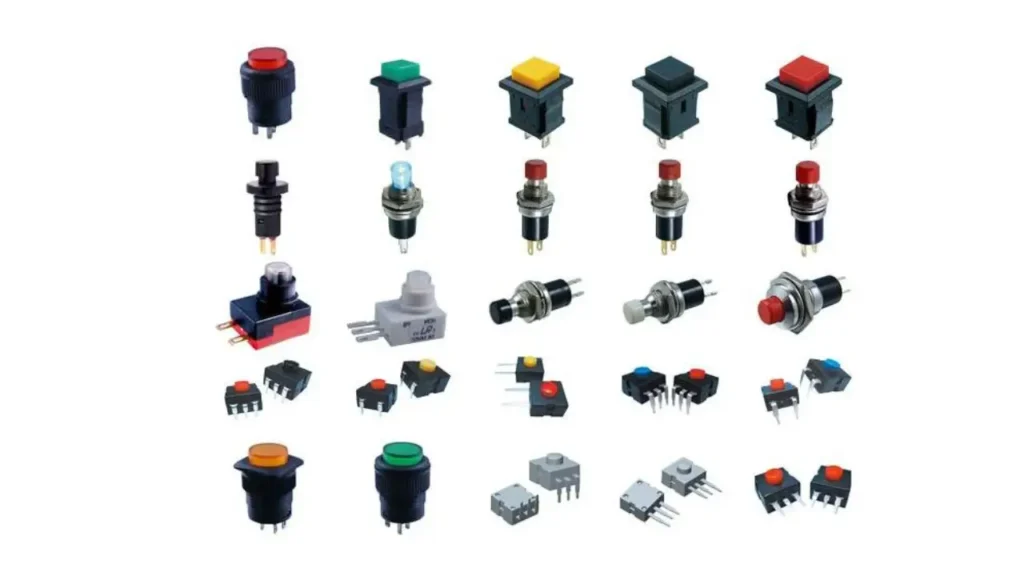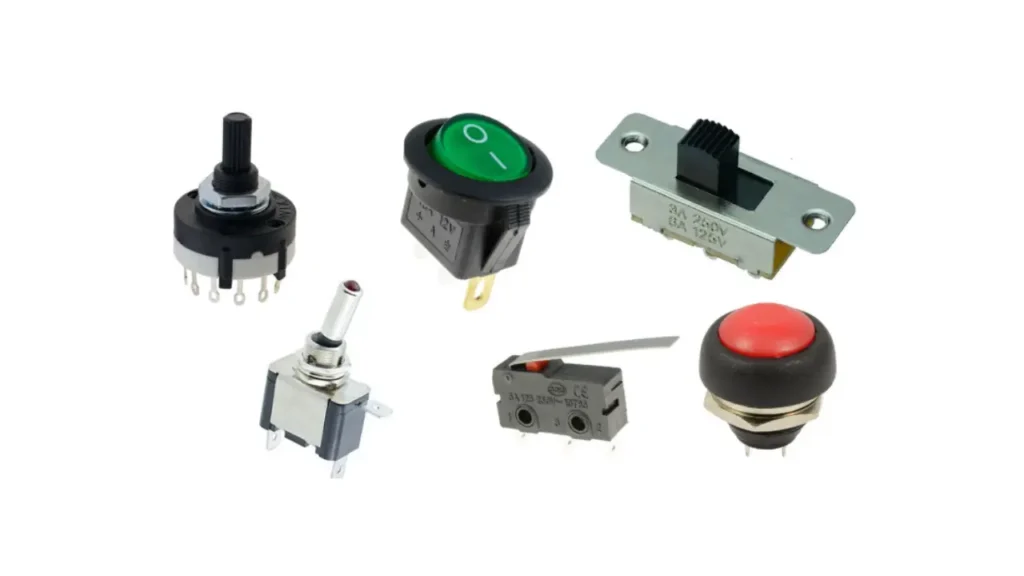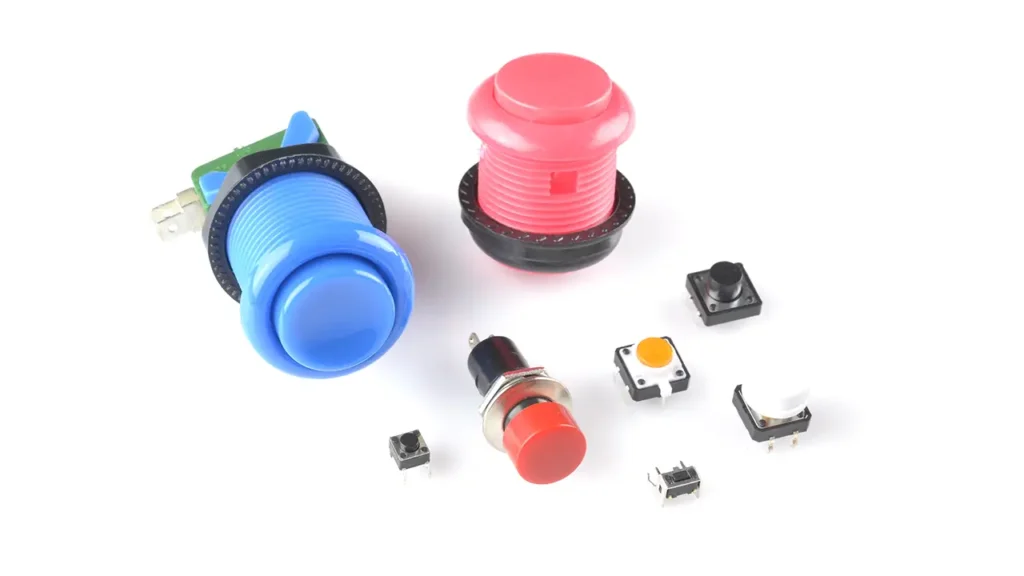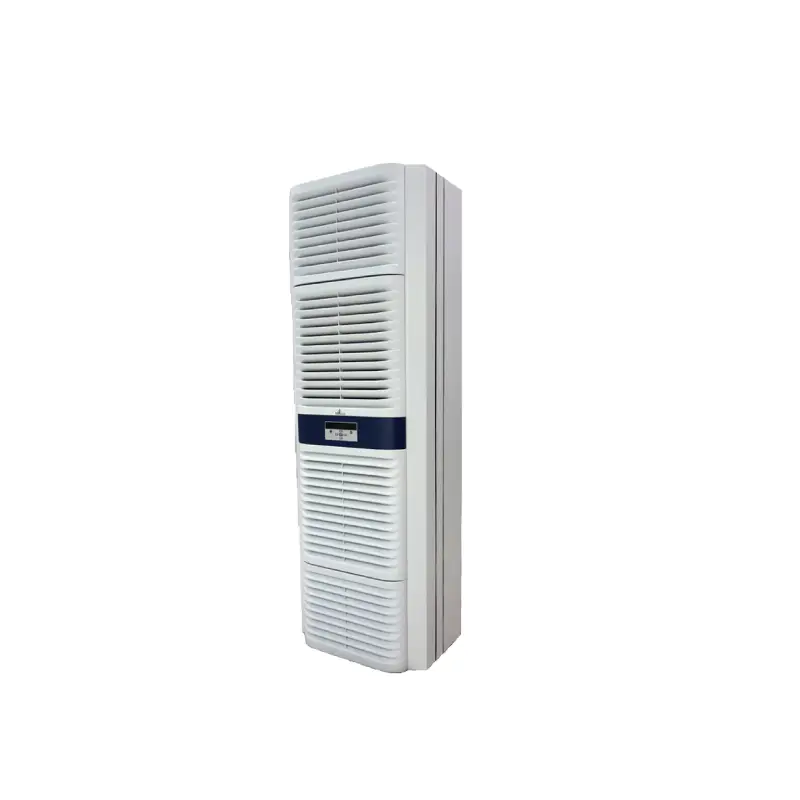Choosing the right push button switch is crucial for any electronic project, and a key decision lies between momentary and latching types. While both activate circuits, their fundamental operational behavior differs significantly, impacting how users interact with your device. Understanding these distinctions is essential for proper functionality and intuitive user experience.
This blog post will delve into the core characteristics of momentary and latching push button switches. We’ll explore how each type works, their common applications, and the pros and cons of using them, helping you make an informed decision for your specific design needs.
What are Push Button Switches

Push button switches are a fundamental type of electrical switch designed to control a circuit by mechanical actuation, typically involving a press and release motion. They operate by making or breaking an electrical connection when a user depresses a button.
These versatile components are ubiquitous in electronics and machinery, used for initiating actions, toggling states, or sending signals, ranging from simple on/off functions in household appliances to complex controls in industrial equipment and vehicles.
Push Button Switch Types

Push button switches are fundamental components in countless electronic and mechanical systems, providing intuitive control through simple actuation. Understanding the different types is key to selecting the ideal switch for your specific application’s needs and operational requirements, ensuring both functionality and user satisfaction.
Momentary Push Button Switch

Momentary Push Button Switches are characterized by their transient contact functionality; they establish an electrical connection only for the duration that the button is physically depressed by the user. The moment pressure is removed, an internal spring mechanism swiftly returns the button to its original, unactuated position, thereby either breaking an open circuit (if normally open) or re-establishing a closed circuit (if normally closed). This design ensures that the action initiated by the button is temporary and ceases immediately upon release.
These switches are indispensable in applications where a brief, discrete action is required without maintaining a continuous state. Classic examples include doorbell buttons, the individual keys on a computer keyboard, or the trigger on a power tool that only operates while the button is held down. Their utility lies in providing a quick, responsive, and non-persistent control signal, making them perfect for starting processes that are self-regulating or require constant user engagement.
Latching (Maintained) Push Button Switch

In contrast, latching (maintained) push button switches operate by altering their electrical state with each press and then holding that new state until another press reverses it. For instance, a single press might toggle the switch from an “off” position to an “on” position, where it will remain until a subsequent press toggles it back to “off.” This mechanism involves an internal detent or locking system that physically holds the switch in its activated or deactivated state.
This type of switch is ideal for applications where a continuous on/off control or the toggling between distinct operational modes is necessary without requiring the user to constantly hold the button. Common applications include the power buttons on televisions or computers, light switches that control room lighting, or selectors on industrial machinery that maintain a chosen setting. Their ability to “latch” into a position provides a stable and persistent control signal, freeing the user from continuous interaction.
Normally Open (NO) Push Button Switch

Normally open (NO) push button switch are configured so that the electrical circuit is open (no current flows) when the button is in its resting, unactuated state. When the button is pressed, it closes the circuit, allowing current to flow. Upon release, the circuit returns to its open state. This is the most common configuration for “start” or “activate” functions.
They are widely used in applications where an action should only occur when the button is actively pressed. Examples include the horn button in a car, a reset button that momentarily activates a system, or a momentary “start” button on a control panel. Their inherent safety feature ensures that if the button is not pressed, the circuit remains disconnected.
Normally Closed (NC) Push Button Switch

Normally Closed (NC) Push Button Switches are the inverse of NO switches; the electrical circuit is closed (current is flowing, or the circuit is complete) when the button is in its resting, unactuated state. When the button is pressed, it breaks or opens the circuit, interrupting the current flow. Upon release, the circuit returns to its closed state.
These switches are typically used for “stop” or “disable” functions, especially in safety applications. For instance, an emergency stop button on machinery is often an NC switch, designed to immediately cut power when pressed. They are also used in interlock systems where a condition must be met (e.g., a door being closed) for a circuit to remain active.
Double Pole Double Throw (DPDT) Push Button Switch

Double Pole Double Throw (DPDT) Push Button Switches are more complex, offering control over two separate electrical circuits simultaneously. Each “pole” represents an independent switch, and “double throw” means each switch can connect to one of two different terminals. When the button is actuated, it simultaneously changes the state of both poles, typically switching both from one set of contacts to another.
These versatile switches are used when a single button press needs to control two distinct functions or switch the polarity of a circuit. Applications include reversing the direction of a small motor (by switching its polarity), toggling between two different power sources, or controlling multiple LEDs with a single button. Their ability to manage two independent circuits makes them powerful components in more intricate control systems.
Here is a table showing you the different types of push button switches:
| Switch Type | Default State (Unactuated) | Action on Press | Key Feature | Common Applications |
|---|---|---|---|---|
| Momentary Push Button Switch | Varies (e.g., Normally Open) | Temporary ON/OFF | Returns to default state on release | Doorbells, keyboard keys, computer mouse buttons, “Start” buttons requiring continuous hold |
| Latching (Maintained) Push Button Switch | Varies (e.g., Normally Open) | Toggles state | Maintains state until next press | Power buttons (on/off), light switches, mode selectors |
| Normally Open (NO) Push Button Switch | Circuit is Open | Closes Circuit | Completes circuit only when pressed | Car horn, momentary “Start” buttons, reset buttons |
| Normally Closed (NC) Push Button Switch | Circuit is Closed | Opens Circuit | Breaks circuit only when pressed | Emergency stop buttons, safety interlocks, “Stop” buttons |
| Double Pole Double Throw (DPDT) Push Button Switch | Varies (Multiple contacts) | Switches 2 circuits simultaneously | Controls two independent circuits | Motor direction reversal, dual-function controls, switching between power sources |
What is the Difference Between Momentary and Maintained Push Buttons?
Push buttons are fundamental components in countless electronic and mechanical systems, enabling user interaction and control. Understanding their various types and functionalities is crucial for effective design and troubleshooting. Among the most common distinctions is the operational difference between momentary and maintained push buttons.
Here’s the difference between momentary and maintained push buttons:
- Momentary push buttons are designed to activate a circuit only while they are being pressed. As soon as the pressure is released, the circuit returns to its original state (either open or closed). Think of a doorbell button: you press it to ring, and when you let go, it stops ringing.
- Maintained push buttons, also known as latching or alternate action buttons, remain in their activated state even after the user releases the button. They typically require a second press to return to their original state. An example is a light switch: you press it once to turn the light on, and it stays on until you press it again to turn it off.
What is the Difference Between Active High and Low Push Buttons?
In digital electronics, the terms “active high” and “active low” refer to the logic level that activates a particular input or output. This concept is crucial when interfacing push buttons with microcontrollers or other digital circuits.
Here’s the difference between active high and active low push buttons:
- Active High Push Button: When an active high push button is pressed, it outputs a “high” logic level (typically a voltage close to the supply voltage, like 3.3V or 5V). When the button is not pressed, it outputs a “low” logic level (typically 0V or ground). This configuration usually involves a pull-down resistor to ensure a stable low state when the button is open.
- Active Low Push Button: Conversely, when an active low push button is pressed, it outputs a “low” logic level (0V or ground). When the button is not pressed, it outputs a “high” logic level (supply voltage). This setup commonly uses a pull-up resistor to maintain a stable high state when the button is open. Often, microcontrollers have internal pull-up resistors that can be enabled, simplifying the circuit for active-low buttons.
Push Button Switch Uses
Push-button switches are ubiquitous, found in nearly every aspect of modern life due to their simplicity, reliability, and versatility in controlling electrical circuits. Their applications span across consumer electronics, industrial machinery, automotive systems, and even medical devices.
Here are some common uses of push-button switches:
- Consumer Electronics: From powering on televisions and operating remote controls to controlling home appliances like microwaves, washing machines, and blenders, push-button switches are essential for user interaction. They are also prevalent in gaming controllers, smartphones (for power and volume), and audio equipment.
- Industrial Control: In industrial settings, push-button switches are critical for starting and stopping machinery, activating emergency stops, controlling conveyor belts, and operating various automated processes. They are often robust and designed for heavy-duty use in harsh environments.
- Automotive Applications: Vehicles utilize push-button switches extensively for functions such as starting the engine, opening windows, adjusting seats, controlling lights, operating the horn, and managing infotainment systems.
- Public and Commercial Spaces: Elevators, vending machines, ATMs, doorbells, pedestrian crosswalk signals, and public address systems all rely on push-button switches for their operation, providing a clear and tactile interface for users.
- Medical Devices: In the medical field, push-button switches are used in a variety of equipment, including patient call systems, diagnostic tools, and surgical instruments, where precise and reliable control is paramount. Push button switches are ubiquitous in modern technology, serving as intuitive interfaces for controlling a vast array of devices and systems. Their simplicity and reliability make them indispensable components across various industries and everyday applications.
Here are common uses of push button switches:
- Household Appliances: From turning on a microwave to operating a washing machine or coffee maker, push buttons are integral to the functionality of many home devices, offering straightforward on/off control and function selection.
- Industrial Machinery and Control Panels: In factories and manufacturing plants, push buttons are critical for starting, stopping, and controlling various machinery, often forming part of larger, comprehensive control systems with clearly marked functions and emergency stops.
- Consumer Electronics: Devices like televisions, remote controls, calculators, and computer keyboards rely heavily on push buttons for user input, navigation, and activating specific features.
- Automotive Applications: Modern vehicles incorporate push buttons for numerous functions, such as engine ignition, controlling windows, operating lights, and activating various dashboard features.
- Security Systems: Push buttons are used for arming/disarming alarms, controlling access points, and triggering emergency alerts in residential, commercial, and industrial security setups.
- Public Utilities and Transportation: You’ll find push buttons in elevators and escalators for floor selection, at crosswalks for pedestrian signals, and in various public kiosks and vending machines for user interaction.
- Medical Equipment: Push buttons are often found on medical devices, allowing precise control and activation of various functions in a healthcare setting.
How to Choose Suitable Push Button Switches?
Selecting the appropriate push button switch for a specific application requires careful consideration of several key factors. The right choice ensures optimal performance, durability, and user experience, while the wrong one can lead to malfunctions or safety hazards. Thoughtful selection involves evaluating electrical, mechanical, and environmental requirements.
Here’s how to choose suitable push button switches:
- Electrical Ratings (Voltage and Current): This is paramount for safety and functionality. You must ensure the switch’s maximum voltage and current ratings are equal to or greater than the circuit’s operating voltage and current. Exceeding these ratings can lead to switch failure, overheating, or even fire. Consider both AC and DC ratings, as they can differ significantly for the same switch.
- Switching Action (Momentary vs. Maintained): As discussed previously, determine if you need the switch to activate only while pressed (momentary) or to stay in its activated state until pressed again (maintained/latching). This depends entirely on the intended function of the button within your system.
- Number of Poles and Throws (SPST, SPDT, DPST, DPDT): This specifies the internal wiring and contact configuration.
- SPST (Single Pole, Single Throw): A simple on-off switch.
- SPDT (Single Pole, Double Throw): Can connect one input to one of two outputs (e.g., a simple selector switch).
- DPST (Double Pole, Single Throw): Controls two separate circuits simultaneously with one press.
- DPDT (Double Pole, Double Throw): Controls two separate circuits, each connecting to one of two outputs. The choice depends on how many circuits need to be controlled and how they should be connected.
- Mounting Style (Panel Mount, PCB Mount, Through-Hole, Surface Mount): Consider where and how the switch will be integrated into your product or system. Panel mount switches are designed to fit into a cutout on a panel, while PCB (Printed Circuit Board) mount switches are soldered directly onto a circuit board, either through-hole or surface mount. The mounting style affects assembly and overall product design.
- Environmental Considerations (IP Rating, Temperature Range): The operating environment dictates the necessary protection. The Ingress Protection (IP) rating indicates the switch’s resistance to dust and water. For example, IP67 means it’s dust-tight and can withstand temporary immersion in water. Also, verify the operating temperature range to ensure the switch functions reliably in extreme hot or cold conditions without degradation.
- Actuator Style and Feel: This relates to the user interface and ergonomics. Options include round, square, illuminated, tactile, or non-tactile. The choice impacts aesthetics, visibility (especially for illuminated switches), and the tactile feedback received by the user, which can be crucial for an intuitive and comfortable user experience.
- Lifecycle (Durability): For applications requiring frequent operation, the switch’s mechanical and electrical lifecycle (number of operations before failure) is vital. High-quality switches designed for millions of cycles are necessary for industrial or high-use consumer products, whereas less demanding applications might tolerate switches with lower lifecycle ratings.
Conclusion
In conclusion, understanding the fundamental difference between momentary and latching push button switch types is crucial for effective circuit design and user interface development. Momentary switches provide transient contact, ideal for immediate, temporary actions like a doorbell, while latching switches maintain their state until a second press, perfect for persistent on/off functions. Choosing correctly ensures your device operates as intended.
The right selection hinges on the specific application’s need for either temporary interaction or continuous state control. Mismatching the switch type can lead to frustrating user experiences or even functional failures in your product. Always consider the desired user interaction and the system’s operational logic when making this critical decision.
For reliable and high-quality solutions, you can get wholesale push button switches from our Linkwell Electrics. We offer a wide range of momentary and latching options, including illuminated variants, to meet the diverse demands of your projects.



